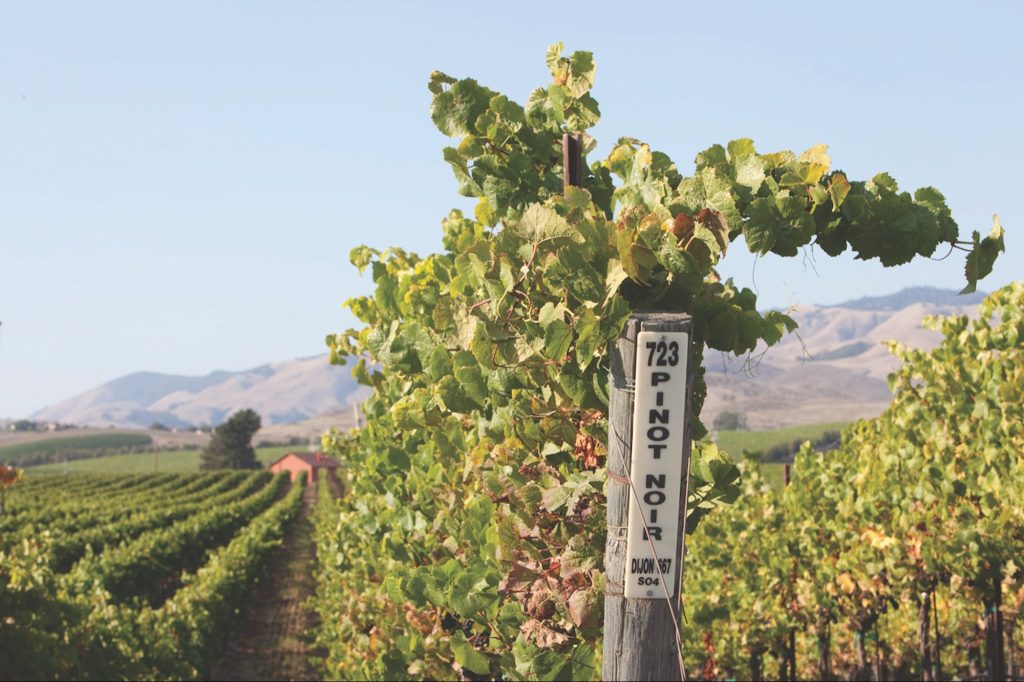Happy hour? Wine not.
But before you plop down your hard-earned money on a savory bottle of red or a bottle of white, you might want to understand better why wines are priced the way they are. Contrary to popular belief, it’s not just because they taste better — or because they’re older than your grandpa.
We asked Brianne Engles, the head winemaker at Chamisal Vineyards in San Luis Obispo, California, to shed some light on this mysterious topic. Chamisal specializes in handcrafted Chardonnay and Pinot Noir, grown on an 82-acre estate in the Edna Valley AVA. Their offerings range from $35 for their estate-grown wines to $100 for their luxury icon wines. Engles says cost boils down to three key factors — farming, oak, and quality.
Brianne Engles of Chamisal Vineyards
Farming
Harvesting grapes at a vineyard can be costly, including planting, irrigation, and labor. At boutique wineries like Chamisal, individual “blocks” or a designated group of premium vines in a vineyard require more TLC.
“Our highest producing, highest quality blocks tend to have lower yields,” explains Engles. “When you have lower yields, your cost of farming is higher.”
This is because low-yield grapes result in lower production, leading to more scarcity of product. All the pruning, canopy management, and harvesting at Chamisal are performed by hand and follow Organic farming practices, which require multiple vineyards passes throughout the growing season. These labor-intensive elements contribute to the increased cost of farming.
Oak
Oak aging is a popular practice among winemakers because it adds complexity and smoothness to the wine. Chamisal wine is aged in oak barrels imported from France. In the barrel, the wine is exposed to oxygen, which helps to soften the tannins and develop the flavors. The oak barrels also impart unique flavors to the wine, which consumers might say smells like vanilla or baking spices.
The oak barrels at Chamisal are used judiciously to allow for the transfer of oxygen into the wine, elevating the unique character of each grape variety and vineyard site’s soil.
But oak aging is a complex and time-consuming process. “New oak is expensive. So if you have a higher percentage of new French oak, it can lead to a more expensive wine,” says Engles.
Time is also a factor. Some wines are typically aged for 12 to 18 months in oak barrels. This practice takes space and money to ensure that a bottle of wine is appropriately nurtured.
Quality
The quality of the grapes coming out of specific blocks is also a factor in the cost of the wine. But when winemakers measure quality, they’re not just focusing on the taste. At Chamisal, they evaluate the wine that comes out of each block in the cellar and do an extensive evaluation.
“We smell it, sip it, give it grades,” explains Engles. “Winemakers are not just sitting there writing flowery descriptors. We’re determining does it have intensity, are the tannins in balance, does it have enough fruit, does it have all the guts and pieces that make a very high quality.”
All these factors make the perfect bottle of wine harder to achieve, and scarcity causes the price to go up.
Would you like some Chardonnay with that crustacean?
Chamisal is hosting its 15th annual Lobsterfest on July 21 and 22nd. Lucky gourmands are treated to long tables piled with steamed lobster, corn, artichoke, sausages, and, of course, lots of wine.
Prices range from $215 for club members to $265 for the general public.
For reservations, visit their site.
Read the full article here










